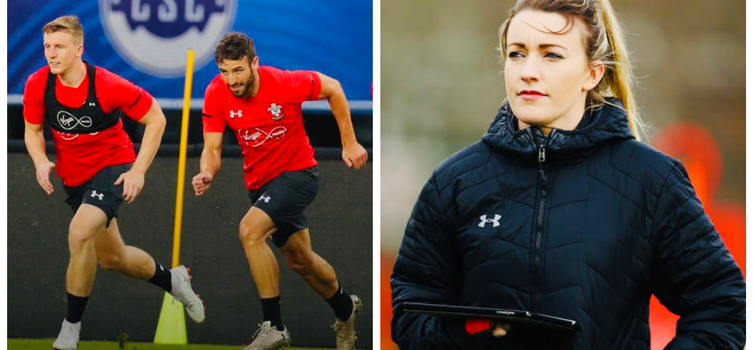Southampton: Higher chronic loads protect against injury risk

Laura Bowen's team monitored training and injuries over three seasons
A THREE-YEAR research project carried out by Southampton has found that sudden spikes in training load dramatically increase injury risk - but that building workload over longer periods protects against this.
Laura Bowen, the club’s first-team data scientist, led a project monitoring the relationship between training load and injuries over three seasons in conjunction with Birmingham University.
A total of 33 Southampton first-team players were monitored during the 2014/15, 2015/16 and 2016/17 seasons, with data taken from GPS during training, and from video analysis during matches in the final two seasons of the sample.
It was found that when chronic load exposure was low, an acute:chronic ratio of more than two was associated with five to seven times the risk of a soft tissue injury. However, high chronic loads were found to alleviate this risk.
Acute load is the size of a player's workload over a recent period of time (one week in the case of this study), while chronic load is workload over a longer period (which was taken as the four-week rolling average). The ratio represents what a player has done this week, compared to the last four weeks.
Bowen said: “The aim of this research was to find out how much we can train them, without pushing them so far that they get injured. Putting it really simply, we found that if they trained over double the amount of the previous few weeks it was five to seven times more likely they would get injured.
"If they don't train enough they are at risk of injury, because training makes them more robust to the work we put into them. But, if they do too much they become over-trained and increase, for instance, their chance of pulling a muscle.
"So we work on a U-shape and our research finds the optimum amount of work they can do in order to get the best out of them, both from a performance and an injury-prevention perspective."
The report, which is published in the British Journal of Sports Medicine, adds: “The findings support a growing body of literature suggesting that acute, excessive, rapid increases in loads may be responsible for a large proportion of non-contact injuries, rather than chronic exposure to higher loads.
“Very high acute spikes when the chronic loads were low corresponded to the greatest non-contact injury risk. We recommend that training programmes should involve progressive exposure to higher loads to enhance physical capacities while minimising the risks associated with rapid, excessive spikes.”
Australian sports scientist Tim Gabbett, who has done leading work on the acute: chronic load ratio, told TGG: “The key point is that chronic load is associated with lower risk of injury. That goes against what practitioners have traditionally thought should happen.
“For the first time, we are starting to see evidence in football that higher chronic load protects against the spike. Higher chronic load builds aerobic fitness and lower body strength.
"If you have two players exposed to the same spike in load, but one has built greater chronic load, he or she will have a much lower chance of injury. High loads are good so long as you get there in a safe way.
“You don’t need to look too far back to see the heat that someone like Jurgen Klopp got for apparently training his players too hard. This research has debunked opinions such as that."
In May 2017, former Wales assistant Raymond Verheijen publicly criticised Klopp for training his players too hard - having made similar comments about the methods of Antonio Conte and Pep Guardiola before.
He said: "On the one hand Klopp wants his players to play with maximum tempo and on the other hand he wants them to do it two or three times a day in training and is exhausting them and running them into the ground.”
Southampton recently reorganised their performance department, with research and innovation becoming a key arm. Mo Gimpel, the former Director of Performance Science, took up a new role overseeing research and innovation.
Bowen is studying for a PHD in the patterns of key factors prior to injury at Birmingham University and carried out research into the effect of workload on elite youth players in 2015, discovering similar results.
She added: "We're one of the only elite sports environments - and definitely Premier League football clubs - to have released research that is pretty open to how much work we do and the injuries that we get, so we're hoping we're encouraging other clubs to open their doors to things like this too and that we can keep growing the knowledge in the field in the future.
"It makes me feel like we're doing something worthwhile as a team and that we're making a difference. It's nice to make a difference on and off the field in one go and put it out there for other people as well."
The paper states that Premier League players typically suffered two injuries in the 2016/17 season and that clubs paid £12.4m in wages to injured players.














